Football Under the Microscope
This week we're taking a look at the science of football, from physics to psychology. And in the news, can being social stave off dementia, and what new features have been found on the surface of Pluto?
In this episode
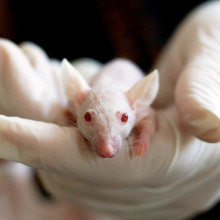
00:53 - Friends help battle dementia
Friends help battle dementia
with Liz Kirby, Ohio State University
One of the realities of getting older is that things can slow up a bit, and that goes for our memories too. But there might be a way to knock age-related cognitive decline on the head and that's by keeping in close contact with your friends. Chris Smith spoke to Ohio State University's Dr Liz Kirby...
Liz - We know that our memory and our cognition declines as we age and this is just a normal thing that happens. But there is a lot of factors that can help prevent that or at least slow it. We know things like exercise or even dietary restriction can help slow this decline in memory function. And there's a lot of evidence in humans that having lots of friends, lots of social contacts, can also slow this decline. But in humans it's hard to tell if having more friends prevents memory decline, or if people who have declining memory tend to withdraw from their friends. We can't figure out which is causing what. So I set out to determine this in animals, where we can do things like control how many social contacts an animal has.
Chris - And which animals were you looking at?
Liz - We used normal adult aging mice.
Chris - But mice don't traditionally go into care homes or go to church singing choirs or join orchestras and things. So how do you actually do the experiments so that you get something meaningful from the mice?
Liz - With mice we can essentially control how many roommates they have. They can live with, in our case, we put them in pairs, two mice. So that's our low level of social contact; our “old couples”. Or they can live in large groups. And in this case we put seven mice in a cage, so they have sort of a larger community. At the end of three months living either in small group pairs or the large groups (7 mice per cage), we measured their memory function, and in particular, we measured memory that depends on a brain area called the hippocampus. The hippocampus is incredibly important for forming new memories, and it's the area of your brain that deteriorates probably the most with age and definitely very prominently with Alzheimer's disease.
Chris - And you think these memory tasks that you set for the mice are a reasonable proxy for how a human would perform?
Liz - Everything we know about these memory tasks in mice versus humans suggests that they're testing very similar parts of the brain. With mice that particular task that we used was called a “novel object placement task”. The mice were put into an arena with two objects and they got to get to know those objects, explore them. They were taken out of the arena and then after a delay they were put back in it. The same two objects were there but one of them had moved. Mice prefer to spend time and investigate things that they think are different. So if they remember the two objects, they should spend a lot of time with the moved object. But if they don't remember the objects, then they'll spend about the same amount of time with them. And what we found is the group-housed mice showed much better memory for the object that moved in our memory task than the pair-housed mice.
Chris - And was that born out neuroanatomically? So in other words, if we go and look now in the brains of these animals can you see changes or differences that would be consistent with those behavioral differences?
Liz - What we saw when we looked at the brains of these mice was that the group-housed mice had less signs of what we call neuroinflammation. This is inflammation just like when you get sick, your immune system inflames. Your brain also shows signs like this. And this is something that happens commonly with aging and people believe this is part of what causes your brain not to function as well. When we looked at the brains of group-housed mice, they had less of this neuroinflammation compared to the pair-housed mice.
Chris - So what do you think that is? Why should hanging around with a big group of your friends make you have less inflamed brain and therefore show less brain attrition as you age?
Liz - There are a lot of theories. One of them just has to do with how hard it is to deal with other people, or in this case other mice. If you can imagine dealing with people everyday, takes a huge amount of cognitive load. It puts a huge stress on your brain. You have to figure out what they want, what you want, what you think they think you want. And a lot of people think that this cognitive load is a mental exercise and that's what helps keep your brain healthy.
Chris - Could it not be though that if you're in a big group of animals, you perceive a bit of a challenge? You might think “I better keep active because I want to go and eat and someone else might steal my lunch.” It may also be that you're running around more. We know that exercise is very good for the brain. There's whole lot of other factors that could explain this, though, aren’t there?
Liz - There are other factors. So, exercise is a possibility. We looked into that as best we could with our mice and we didn't see any signs that they were getting more exercise. For example, they weren't any trimmer. They all showed a relatively portly aged figure. Exercise would tend to decrease their body weight just like it would in humans. We looked for other signs such as better activity, moving around more in our behavioral tasks, and we didn't see anything like that.
Chris - And what about sort of extrapolating this to humans? What do you think the takeaway message for aged humans, or aging humans should be from what you're finding here?
Liz - There certainly isn't any harm from thinking about your social contacts as you age. If you're making a choice as you age about where you live, for example, all the human evidence points to there being a positive correlation between having more contacts and preserving your cognitive function. And now our study suggests that this really actually might be causative; you actually having more contacts actively protects your brain. So if you're making a choice about where to live, try to choose a living situation where you'll be able to maintain contact, even for example as your mobility decreases or as you can't drive anymore.
Chris - So a retirement village rather than a retirement hermitage.
Liz - Yes, that’s a great way to put it: a retirement village, or a retirement community.
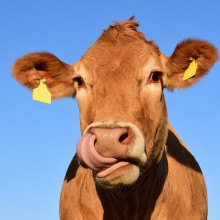
06:24 - Carbon emissions of food production
Carbon emissions of food production
with Joseph Poore, University of Oxford
One of the biggest drivers of carbon emissions and land use around the world is food production, with beef having a larger carbon footprint than other meats, and meats being worse for the planet than vegetables. A new study from Oxford has suggested that there is variation within products depending on suppliers and methods used. Georgia Mills spoke with Joseph Poore about what this could mean for reducing our carbon footprint...
Joseph - The initial inspiration was I wanted to understand if I could reconcile my personal consumption of animal products with a rapidly degrading global environment. I wanted to know if there are farmers out there who are producing low environmental impact foods, and if so, what could we learn from them.
Georgia - So we already knew that some products were worse for the environment than others. But you wanted to go one step further and find out within each range what was going on?
Joseph - Yeah that's right. So we wanted to see the range of impact between low impact producers and high impact producers with the same product, not just on greenhouse gas emissions but on land use, water use, acidification, eutrophication, other important environmental indicators. We also wanted to do this for the whole food supply chain. So from the clearing of land to agriculture, the production of fertilizer, right through to transport and retail.
Georgia - Right. So how did you get ahold of this data?
Joseph - We used data from 720 published studies and these studies have visited farmers and other companies in the food supply chain in countries all around the world. We brought this data together and consolidated data on 40 thousand farms and 16 hundred processors, packages and retailers.
Georgia - When you picked this data then what did you find? What were the big surprises?
Joseph - I mean the first thing that really stood out was the variation in environmental impact, both within and between products. So for staple products, say rice, a high impact farm is creating six times more greenhouse gas emissions per serving than a low impact farm. A pint of beer can create three times more emissions and use four times more land. And so these are two products that look the same in the shop but are actually having pretty dramatically different impacts on the planet. One product that really stood out was beef. So high impact beef uses 750 metres squared of land compared to low impact beef which uses 15 metres squared of land. So that’s a four thousand nine hundred percent difference. And then there are also the differences between products, comparing for example, high impact beef to low impact peas is a twenty five thousand percent difference on greenhouse gas emissions and an eleven thousand percent difference on land use. So yes these are pretty vast differences.
Georgia - You've also looked at things like tea and coffee and chocolate and all my favorite vices. So how much have I damaged the world with all these things I love?
Joseph - I think it's important to have nice things in our life. I think there is the potential to reduce the impacts of what we're consuming or avoid consuming a certain product. Yeah I think we should take it. in a standard bar of chocolate, about 50 grams, the lowest impact bar can effectively create zero greenhouse gas emissions, versus a high impact bar creating about six point seven kilograms of carbon dioxide equivalents. You see the same for coffee, perk up the difference in greenhouse gas emissions ranges from just about 80 grams of CO2 to one point three kilograms for a cup of coffee.
Georgia - And you mentioned your inspiration for doing this was you were worried about your own consumption. You wanted to find out more. So how are you hoping this paper will engineer change?
Joseph - So we put forward a kind of integrated solution at the end and we look at how we can connect consumers with producers and create a chain of accountability throughout the food system. For producers, this is going to be about monitoring their own environmental impacts and take steps to mitigate them and reduce them. We also suggest providing incentives and diverting some agricultural subsidies to do this. Then it's about communicating information to suppliers which could encourage more sustainable sourcing, and then communicating through to consumers and actually enabling consumers to choose between products with high impact, products with low impact, and also producers with high impact and producers with low impact. So connecting the system like this, possibly through a catalyst like a product label, could see real change.
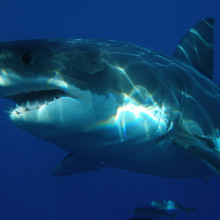
11:12 - Myth: Why do sharks attack swimmers?
Myth: Why do sharks attack swimmers?
with Adam Murphy
There's a common belief that sharks attack swimmers because they mistake them for seals. Is that true? Adam Murphy has been investigating this biting question...
Adam - Great white sharks can seem absolutely terrifying. “Jaws” was proof enough of that. They can be up to six metres long, weigh nearly 2000 kilograms, and can swim at 35 miles an hour. They are apex predators. Nothing goes near them.
There's an idea floating around that sharks attack surfers and other swimmers unprovoked because to the shark it looks like a seal, and a seal looks like lunch. But that's probably not true, and the reasons why might be a comfort to you, or they might not. Is there a comforting way to be bitten by a shark? Sharks don't think we're seals. Sharks approach seals and other human-sized prey in a totally different way to how they approach us. Now while it's possible that sharks occasionally have cases of mistaken identity when they can't see very well, in open water when a shark hunts a seal it torpedoes itself towards the surface in a move called a breach. The shark rocket takes out the seal before the seal has time to think “hey what's that thing rushing towards me at tremendous speed?”
Meanwhile, sharks usually approach us calmly and quietly in comparison. Then, yes, they do take a bite but not for food. It's usually because they're just curious wondering what that thing in their backyard is, and they don't have hands to prod and poke something. Babies do that too. Need to understand what something is? Are you a baby? Put it in your mouth. So sharks are just like babies; giant, serrated tooth-filled babies. Isn’t that nice? And even if they were going to attack humans for food, we're really not worth the effort. Compared to blubber rich seals and sea lions we’re very boney things.
Research published in 2016 has shown that most of the bites inflicted on surfers and surfboards aren't strong enough to take out or incapacitate a seal. And sharks are very good at doing that. That idea is supported by Peter Klimley from the UC Davis College of wildlife fish and conservation biology and was supported by R. Aidan Martin, Former Director of the reef Quest Center for Shark Research in Vancouver, Canada before his death in 2007.
There is a theory that sharks will make an initial bite, swim off, and wait for the thing to bleed out. Well, they tend to use that for large prey. Elephants-seal-large, and we are not that large.
So unless they are desperate, they don't think we're seals and they want to investigate more than they want to hurt us. Sadly the sentiment is not returned. In 2013 humans were killing 100 million sharks a year, which is roughly two hundred every minute. That means the great white shark is now listed as vulnerable, and great whites can take up to 30 years to be able to reproduce making it that much harder for them to replace their population. Maybe it's time we start looking after them and stop being so afraid of them. We should probably do that before we seal their fate.
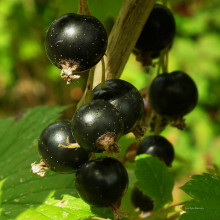
Making hair dye from blackcurrants
with Richard Blackburn, Leeds University
New work has turned a waste product from the drinks industry turned into a way to dye your hair. Chris Smith spoke to Dr Richard Blackburn of Leeds University, to learn about the power of blackcurrant...
Richard - We got into hair dyes because I've spent my whole career working in the area of colour chemistry, started off dyeing textiles but then eventually got into sustainability. And we were concerned about some of the research around current existing hair dyes linked to allergic reactions and other toxicological effects. So we really just wanted to provide an alternative. We started by really applying those principles of sustainability, green chemistry, whatever you want to call it, to try and find what we thought was a safer alternative. And so to do that we looked to nature.
Chris - So what are you looking for in a good dye?
Richard - We want the dye to be attracted to the hair. We want it to bind to the hair first and foremost so that you can get a strong colour. We also want it to stay there. We don't want it to wash out. We don't want it to fade in light and obviously we want it to be safe. We want it to be easy to apply and for it not to have any negative effects on the user or in subsequent disposal when it goes down the drain.
Chris - Now anyone who's ever done the experiment with an Italian dish and their white shirt, or had children that have gone and played cricket and come home with whites that you cannot clean for love nor money. I mean it's pretty obvious that nature is replete with all kinds of exciting colours that have a very close love affair with things that we don’t want to become coloured. So why is this a problem finding things that are out there, natural dyes, that that won't have environmental hazards and will do the job you're looking for?
Richard - Well we shouldn't assume that natural equals safe. Nature spent millions of years evolving methods to stop it from being eaten and to be poisonous and things like that. And actually if you look at the plant kingdom, there’s actually not that many things as a percentage that you can eat. First and foremost we have to know that if we use it from nature it's got to be safe. But in terms of the ability to colour hair we have to look at specific types of chemistry in nature.
Chris - And what chemistries have you explored here?
Richard - Well I'll give you a great example. Beetroot, as you'll be familiar with, is an incredibly intense, red color. Put that on the head and it doesn't do anything. It literally washes straight off. Whereas these pigments that we get from the skin of a black currant, they have got a certain type of chemistry which allows them to bind very strongly with protein, and hair is essentially a protein. So we thought “Well you know, let's see what happens.” We extracted certain compounds from the skin and then developed that application, basically making a formulation.
Chris - Doesn't this mean though that you end up with purple hair? Isn't this a bit like the hair equivalent of the model T Ford of the early nineteen hundreds? You know, any color you like as long as it's black currant.
Richard - Well, unlike Henry Ford, we're not that limited. The great thing about these pigments that occur in fruit and in flowers, they’re called anthocyanins. Interestingly, “anthocyanin” comes from the Greek “anthos,” meaning flower, and “cyan” meaning blue, which is really interesting because most of these anthocyanins in fruit certainly don’t make a blue. Even a blueberry is not blue. You know, when you crush it, it's quite purple. But what happens with these anthocyanins is that they actually are pH sensitive. So in the plant they tend to be more reddy and purple and that's at very acidic conditions. Now as soon as you actually start to change the pH, the colour will change. Then they go blue when they become more neutral.
Chris - Well you know you're not selling this to me Richard, because either you can have purple hair or blue hair.
Richard - Well you see the interesting thing there is that if we're going to make these colors go on to the hair we want to be able to produce a whole range of different colors. And the most difficult thing to get from nature is a blue. If we can get a blue then that means we can combine that with a red and we can combine that with a yellow. So we can get a brown with this system.
Chris - So that does have potentially genuine applications.
Richard - Absolutely.
Chris - You can dye hair with this and it won't wash out? You won't go in the bathroom and your hair color goes back to whatever you started with?
Richard - It's in the classification of “semi-permanents”, which puts about lasting about 12 washes.
Chris - And is this more sustainable in the sense that I haven't got to go and grow an enormous field full of blackcurrants just to make hair dye?
Richard - Well the great thing about being in the UK is that we grow a tremendous amount of blackcurrants, and over 90 percent of those are used for “Ribena”. So those are pressed for juice and at the end of that process, essentially, the pressed skins are waste material which ordinarily were being thrown away. And that's how we came to this in the first instance when we were looking into nature and trying to find all the different solutions. So we take those skins and extract the pigment out of that, and that's the kind of science bit if you like, is how we get the pigment out and turn that into the hair dye.

Dunes on Pluto
with Matt Telfer, University of Plymouth
At the edge of our Solar System lies Pluto. It was often thought of as little more than a cold, barren, boring ball of rock and ice that couldn’t even call itself a planet any more. But in 2015, the New Horizons probe flew past Pluto and took an awe-inspiring sequence of photos which are provoking a re-think. Some of the shots were of the “Sputnik Planitia”, which is an ice field over 1000 kilometres long. And the team analysing these images then saw something else on Pluto that’s surprisingly close to home. Adam Murphy spoke to lead author Dr Matt Telfer of the University of Plymouth, to find out what he’d spotted...
Matt - One of the things I became fascinated in were some regular ridges on the surface of the icy plain of Sputnik Planitia, which appeared for all the world to look like dunes.
Adam - So Like sand dunes like we have here?
Matt - Yeah exactly. And that was one of the crazy things because we looked at that and thought well this is such an amazingly different world in so many ways. We're looking at a landscape at minus 230 degrees C, and yet we have got these features, not just the dunes which look so familiar but we've also got mountains, we've got glaciers we've got so many things that look so familiar in this alien environment.
Adam - And what are these sand dunes made of. Because they're not made of silica like our sand is right?
Matt - No absolutely. The sand dunes are made of, primarily of methane we believe. So the ice cap that they sit on is a mixture of nitrogen, carbon monoxide, and methane ices. But the dunes themselves appear to be particularly rich in methane ice
Adam - That means they're made of what comes out of your cooker essentially, natural gas?
Matt - Essentially yes that's it.
Adam - How do they form? How do they get there in the first place?
Matt - Well that was the bigger mystery. Once we'd identified the fact that they certainly looked like dunes, we then had to go about explaining how that could possibly be the case because the issue we've got is that we've got such a thin atmosphere on Pluto it's something like 1/100000 th the atmosphere on Earth. Then the question became how is it possible to have enough wind to mobilise grains of methane ice to form dunes in first place. And what we realised through a combination of numerical modelling and observational work was that once these grains were started to move in the air we could keep them going. But the problem became how did we get them going in the first place? And that we realised was caused by a different process. This relates to the sublimation that these mixed ices.
Adam - Like when the sun hits it turns the nitrogen from solid nitrogen right into a gas straight away?
Matt - Yes absolutely. That's right. So because the nitrogen ice will sublimate first, as it turns into vapour in the atmosphere, it will loft, it will lift up these these methane grains. And there's probably enough sun as well to start operating some of the methane. But the key is because the nitrogen will go first it will lift these methane grains up and then although the winds are relatively weak and relatively low speed there's enough of them. We've done the modelling work. There's enough of that wind to keep it moving once it starts going.
Adam - Do you think Pluto has much more to show us?
Matt - I think there's a lot more to learn from Pluto. Of course, the difficult bit is that that mission was 10 years in the planning, nine years in flight time so we're looking at a 20 year lead in time for a mission out to Pluto. There are no immediate plans for anything else to go back out to Pluto. So really what we've got from that amazing flyby in the summer of 2015 is, is really what we've got to work with for now. One of the key things for us now is to dig further into this process of lofting grains by sublimation which is what appears to be happening at Pluto because that is something really new that's, that's a new process, a new mechanism but we haven't really observed elsewhere in the solar system in quite this way.
Adam - Just to ask, on the whole is Pluto a planet. Where do you stand on that?
Matt - It's funny. This is a question I've been asked more than I imagined. I'm not a big one for arguments, my general excuse here is to come out with “I like the term world.” I’m not going to sit on the planet, or the planetoid, or the dwarf planet fence. I’m just gonna to think of it as a world because I think that encapsulates the fantastic diversity of the landscape that we see out there. It really is another world it's not just an icy blob out in space it's not just a snowball out on the outer reaches of the solar system.
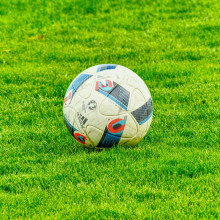
25:29 - The physics of bending it like Beckham
The physics of bending it like Beckham
with Hugh Hunt, Cambridge University, Ruth Fox, Cambridge United
What physics underlie the game of football? Georgia Mills teamed up with footballer, Ruth Fox and engineer, Hugh Hunt, to break down how to “bend it like Beckham”, and to investigate some unusual marble statues...
Ruth - It’s a statue to commemorate where the football rules were first written down I believe.
Georgia - I like this first rule: it’s 1848, the laws of the university football club. This club shall be called the University Football Club. It’s kind of like fight club, the first rule of football club is call it Football Club.
Cambridge has a lot of love for football then so we’re joined by engineer extraordinaire, Hugh Hunt, who’s going to tell us a bit about how physics comes into it.
Hugh - Well, football’s a great game, as we know, but a ball just doesn’t move in a straight line. I suppose if you’re out on the International Space Station it does. There’s aerodynamics, there’s spin, there’s bouncing, there’s all sorts of things and so balls in the air is really interesting.
Georgia - Now I’m thinking about a football game in space. But you’re going to tell me a little bit about how some of the physics works and Ruth is very kindly going to help us out with some demos, show us the skills because you and I, Hugh, are not so good at the actual football part.
Ruth has immediately began putting us all to shame.
Hugh - I’m lucky if I can kick a ball once.
Georgia - Hugh, you mentioned physics and football are related, so how do the two go hand in hand?
Hugh - The first thing I think is spin. And the very first thing we kind of know is if you’ve got a ball and you bounce it, if there’s some spin on the ball it’s going to move off in a different direction, so if you’re playing the game you’ve got to read the spin. If you see that the ball is spinning, you’ve got to know that it’s not just going to come straight to you, it’s going to do some different things.
Then if you’re playing the game you can put spin on to make it bounce into different directions but it moves through the air just like in tennis or cricket, you’ve got a spinning ball moving through the air that curves - bend it like Beckham we’ve all heard. You can curve the ball left and right, you can curve the ball up and down.
Georgia - Ruth, this is something you would do in a game?
Ruth - Yeah, absolutely. There’s a variety of different passes you can use: spinning is one of the ones I particularly do use. Sort of switching, playing and pinging it on the opposite wing is definitely something that I do, and free kicks as well. I always enjoy taking free kicks. You can completely make the goalkeeper go absolutely the wrong way, so yeah.
Georgia - Can you give me a little demo then? Can you bend it like Beckham for us now? Alright we’re backing up… here we go.
Beautiful spin and Hugh’s kicked it back. That was a beautiful demo. The ball definitely curved through the air. Hugh, how is that working?
Hugh - Well it’s interesting. I noticed as we were playing with that that there’s dew on the grass and as the ball gets wetter and heavier it behaves more differently. It’s harder when the ball is wet, is that right?
Ruth - Yeah. I think when it’s not pumped up great.
Georgia - That’s my fault. Sorry about that. I brought a half deflated ball.
Hugh - That’s interesting too because we think that a softer ball is easier because we don’t like to get hurt. But the professionals like to play with a really hard ball because when you’re kicking the ball, the ball squashes up, deforms a lot, and it’s really quite hard to control a ball that’s not round.
Georgia - When it’s spinning, to my mind something that’s round when it moves through the air, no matter what it does, it should go in a straight line because there’s no sort of corners. You know like a bird would use wings to direct itself, it’s just a ball. So how does the physics works that makes it turn around in the air?
Hugh - If you imagine, for the moment, that the ball is stationary and that the air is moving, so it’s like a wind tunnel experiment. So you put the ball in a certain place and spin it, what the air is going to do it’s going to be dragged over the top of the ball. Moving air around the ball, well you need forces to do that. And Newton’s third law of motion that every action has an equal and opposite reaction, if there’s a forced required to move around the ball then there’s an equal and opposite force on the ball. So spinning the ball give you a sideways force. And you can spin it one way and you get a force to the left. The other way you get a force to the right, and then up and then down. I can demo that with this lightweight ball.
Georgia - You wouldn’t see this on a proper football pitch. This is a nice, very light, bouncy red ball.
Hugh - I can put some backspin on this ball and…
Georgia - So a slap to the ball out of the air.
Hugh - And it goes right over Ruth’s head.
Georgia - Yeah. It sort of went forward and then kind of stopped in mid air.
Hugh - If you try to do a pass from one side of the ground to the other, you want it to get there as quickly as possible, but you don’t want it to go out of play, so you want to dip it down so you put topspin on.
Georgia - So it’s the air around the ball being dragged by the movement of the ball spinning, which then exerts a force on the ball and changes its direction?
Hugh - That’s right. And it’s called the Magnus effect.
Georgia - Does the Magnus effect come into things off the football pitch?
Hugh - Oh well, absolutely. There’s a famous example of this back in 1943 when the Dambusters did their dambusters raid in Germany with the bouncing bombs. And Barnes Wallis put backspin onto the bouncing bombs to enable them to bounce on water, and it was all to do with Magnus effect.
Georgia - We mentioned this, I brought an woefully under inflated ball. So why does having more air in a ball mean it’s better on a football pitch?
Hugh - You want to have a ball that doesn’t lose much energy when you kick it. And a soft ball, when you kick it hard, it’s going to squash up, it’s going to change, it’s going to become a bit like a doughnut. The amount of energy that’s lost in all that motion of the ball, the ball just doesn’t go very fast and it’s hard to control it, hard to get spin on it; you don’t know how it’s going to behave.
If the ball’s nice and tight and hard, then it’s much easier to control. That’s right isn’t it Ruth?
Ruth - Yeah, I absolutely agree. Although, when it’s too hard it’s very painful to head.
Georgia - Right. So when you have that much air sort of all squashed up, it just doesn't allow you to compress it which (a) might mean that when it hits your head your head gets compressed instead, but it it’s too squishy then that energy gets lost from the kick?
Hugh - Yeah. It’s all about energy. The design of the ball is quite interesting. The more pressure you put into it the stronger the ball has to be, which means that the materials you use you have to make a ball thicker and heavier. And just generally it’s more difficult to make a ball that contains high pressure so there’s, if you like, engineering limitations.
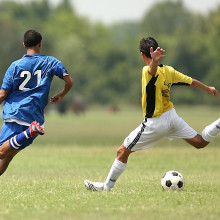
33:39 - The mental pressure of penalties
The mental pressure of penalties
with Bradley Busch, Inner Drive
What goes through a player's mind when they play? How much of an impact does it have on their performance? Chris Smith and Katie Haylor spoke to Bradley Busch, a psychologist with the company Inner Drive, to learn what goes on in the mind of a player. First up, Chris asked about the scope of the business...
Bradley - Hi Chris, Yeah. We do quite a lot of work in football. Generally, players come to us in one of two ways: the first is either if they’ve been referred to us by a team mate. We’ve recently had quite a few players approach us after they’ve read our book “Release Your Inner Drive.” And what we’re seeing more and more recently is a number of players starting to work with us and be recommended either by people around them, so people like their coaches or their agents, and more and more their parents as well.
Chris - Who have you worked with who we might have heard of?
Bradley - Due to confidentiality and psychologist’s ethics, we can’t talk about some specific names, but we can talk about some of the clubs that they play for. We’ve worked with players from Man United, from Tottenham, from West Ham. We’ve got a couple who will be playing at the World Cup.
Chris - Wow. So we’re expecting great things then. No pressure on you Bradley.
Bradley - Fingers crossed.
Chris - Talking of pressure: arguably and it always comes down to this doesn’t it at the World Cup - penalties. That must be something that strikers dread?
Bradley - Some do. Some really relish it and look forward to taking centre stage and being the guy who takes the shot that wins the match for their country.
Chris - What do you do to help them to make sure that they don’t fluff?
Bradley - There’s actually quite a lot of research that probably isn’t used as well as it should be around how teams can do better at penalties for this World Cup. For example, we know that going first in a penalty shoot out in the World Cup increases your chances of winning by about 20 percent.
Chris - Really. Why?
Bradley - Generally speaking it’s linked to stress. Essentially, stress can really hinder performance, and going second and know that if you miss your team is out is more stressful than if you go first because you know that there’s still another chance for your team to go through.
Other stuff that we’ve seen: looking at England, and we tend to have one of the worst penalty records out of all the international teams.
Chris - No, really?
Bradley - I think we have about a one in five record of winning penalty shoot outs. And what one study found was that England players rush their penalty kick after the referee blows his whistle far quicker than all the other countries. So the reaction time between the referee blowing his whistle and them taking the penalty is about 0.2 seconds. Just to kind of give that some comparison; Usain Bolt would be happy with that.
Chris - What’s Germany do? Because Germany always characteristically beat us at penalties so do they pause for longer is that what you’re saying?
Bradley - Yeah. And not even that much longer. Spain used to have a similar problem but they’ve got better in the last few tournaments. The top teams tend to wait - top teams in terms of penalty success tend to wait about 0.8 to 1 second. So not much longer but just having a moment to have a deep breath, compose yourself. Essentially it seems like the England players historically have wanted to rush it and get it out of the way.
Chris - Are you saying we peak too soon?
Bradley - Well, I think they want to kind of get it out of the way really.
Chris - Why does it make a difference if you delay?
Bradley - Essentially, penalty shoot out is often not linked too much to ability because everyone has the ability at that level. It’s often linked to stress; for example anything you can do to reduce stress will help. Having a deep breath and taking a moment to compose your thoughts. There’s a big thing around focusing on what you want, not what you don’t want. So, for example, to give it a step back from football, if I tell you to think of any fruit you want but don’t think of a banana.
Chris- The first think I’m unpeeling in my brain is, yeah.
Bradley - Yeah. And because, generally speaking, the way brain works is we tend to not really register the word don’t so much. And so, if the payers are thinking don’t miss, don’t hit it over, don’t be the guy who loses it for my team it bring all those thoughts, the things they want to avoid to the forefront. Whereas, if they can take a deep breathe and focus on what they want, and pick their spot, and not change their mind I think it generally improves performance.
Chris - Does it also help to make the goalie sweat a bit because all the time you’re standing there not kicking the ball they are experiencing mounting stress levels, which is going to put them off more?
Bradley - The research today is focussed more on what the impact has on the player taking the penalty. However, there is some really interesting stuff goalkeepers cad do to increase their chances. They found that if a goalie was to stay in the middle of the goal and never actually not dive,he’d be twice as likely to save the penalty.
And the reason they don’t do this one of two reasons: one is towards game theory, which is kind of if you do that all the time people will know that and so won’t become effective. But also there’s this concept called like an action bias where people want to do things. If I dive and I don’t save it at least people will see that I’ve tried, whereas the worry is that if I stay in the middle and I don’t save it I’ll come in for the criticism. So, therefore, it’s the illusion of doing something often trumps the logical thing would be to sometimes stand still.
Chris - So just very briefly for us, Bradley, can you give us some bullet points of advice that you give top performers of how to be at the top of their game?
Bradley - Sure. And a lot of the advice we give them comes from a range of… it’s not just sports psychology, it might come from educational psychology, or neuroscience.
The three top tips, I guess:
One - We teach players to focus on what they can control on the pitch not what they can’t change. A lot of players who might be tempted to focus on the stuff they can’t change, such as mistakes in the past or referee decisions or what the crowd are saying. Whereas helping them be process focussed and focussing on their role, their responsibility and playing what they see. Not getting ahead of themselves and catastrophising will be the first area.
The second would be around helping peoples and athletes develop their self-talk. And when psychologists talk about self-talk, it’s not really this cheesy overly positive X factor just because you say you’re good somehow it makes you good. It’s more about are you talking to yourself in a helpful or unhelpful way? Are you helping yourself give yourself instructions on what to do better? Essentially if we were to write down everything you say to yourself and read it back to you, would that script be helpful or would it be something that hinders you?
Chris - Just very briefly the third one, quickly.
Bradley - The third one is helping athletes off the pitch improve their training mindset and resilience, so using mistakes as learning curves. Making sure they're focussing on development and not just short term performance so that they get better over time.
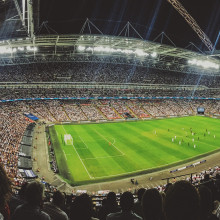
40:34 - The psychology of fanatic football fans
The psychology of fanatic football fans
with Sander van der Linden, Cambridge University
Why is football so popular, and why do people get so attached to certain teams, to the extent that a lost match can really ruin their day, or even lead to violence? Katie Haylor spoke with Dr Sander van der Linden, a psychologist at Cambridge University...
Sander - I think it all boils down to group psychology and identity and so people derive meaning from belonging to different groups, and we define part of who we are by the groups that we belong to.
There’s a very famous psychology experiment that was done in the 70s that was called the Minimal Group Paradigm and they were trying to figure out what were the minimal conditions for establishing group membership. And the found that using the most arbitrary criteria you can create categories of groups and people will slowly start identifying with those groups no matter how arbitrary they are.
For example, if I give half the room a red t-shirt and half the room a yellow t-shirt, people who have the yellow t-shirt will start identifying with other people who are wearing yellow t-shirts even though they have nothing in common with those individuals, and slowly start disliking the group with the red t-shirts, and this is how intergroup conflict gets started.
Katie - Okay. Does this have anything to do with our evolutionary history then this idea of being on one team and not being on the other?
Sander - I think so. People evolved living in groups and it’s very normal and these processes of characterisation, identification, and comparison are quite normal. We sort ourselves into groups, we identify with those groups, and then we start comparing ourselves with other groups. It’s just that the structural conditions of football will enhance those characteristics. So they’re wearing different t-shirts so it’s easy to spot the outgroup member versus the ingroup member. You’re sitting on different sides. You’re yelling at each other so it really drives up the ante.
Katie - I mean this can be so much fun, but sometimes you can get football hooliganism, football related violence. Why is this an issue? What’s this got to do with football?
Sander - I think football as a sport really enhances this idea of group identification, so we belong to all sorts of different groups, right. At work, when somebody says maybe something nasty about a co-worker you’ll probably think this oh, that’s not very nice, I know this person, and so on. But when you so strongly identify with a group in the moment, when somebody insults your group it’s almost like they’re insulting you personally. That’s how strongly you’ve identified with the group and so, when somebody says something bad, that’s how fights get started and everyone sort of thinks as one unit and it becomes easy to start a conflict.
Katie - So, essentially you’re not just dissing my team, your dissing a part of me?
Sander - That’s exactly right.
Katie - On a more positive note then, can being so into a football team be good for you?
Sander - I think so. People really enjoy group activities. As I said, we’ve evolved living in groups. We’ve enjoyed being with other people. Social relationships are very important. The entertainment value is very high for people. It provides some release from everyday stress. People, if you look throughout human history, people really enjoy group activities and it enhances our self esteem and our wellbeing when it doesn’t get aggressive and violent. So I think on most occasions it’s a really joyful activity for people.
Katie - Is it good for your wellbeing if your team wins then?
Sander - It depends on what your team is.
Katie - Is football more popular with men than women? Is there any research to suggest a gender difference here?
Sander - If you look at surveys, I think yes. The amount of interest expressed in football currently is higher among men, even though there’s a very substantial proportion of interest among females, but I don’t think that’s the case because of any biological reason. You see that females are just as interested in football as men - in most sports actually. I think there’s just structural barriers that include societal stereotypes that people have about football being a sort of manly sport. Biases and incentives so sponsors tend to sponsor athletes whose ratings and TV ratings are very high and so if your sport is watched less there’s also less incentive to get finances.
If you look at Wimbledon, for example, I might be quoting the year - I think it was 2007 in which the started equalising prize pay for male and female tennis players. And so I think there were a lot of structural barriers that have cause inequalities but there’s nothing that inherently suggests that there are any gender differences in sports.
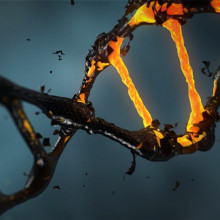
45:09 - Is football stardom in your DNA?
Is football stardom in your DNA?
with Ian Varley, Nottingham Trent University
Is there anything in your genetic code that can reveal whether you’re destined to play for your country? Is there a football, a rugby or a running gene? Offering tests for this is becoming big business, but it’s not based on sound science. Georgia Mills spoke to Dr Ian Varley, a lecturer in sport and exercise science at Nottingham Trent University...
Ian - There are lots of companies, and it has become in vogue in the last maybe five or six years, so very recent, that will test your genetics by sending you a saliva collection device through the post. You will simply spit into the capsule, send it back, and they will send you back some information, maybe not on whether you’re going to be a footballer or not, but whether you have the particular genetic profile which makes you susceptible to being maybe a more power-based athlete. In football, that might be a centre forward or something like that, or maybe a more endurance-based athlete, maybe more midfield player you could say.
Georgia - Is there evidence that there can be a ‘midfielder’ gene?
Ian - Unfortunately not. As you can probably imagine, genetics is very complex so being able to identify a particular gene which says that you are a midfield player, or you’re going to be a good footballer in any position is very very complex. To put this into perspective, it was recently identified maybe about five or six years ago there is about just under 300 thousand genes or genetic variants which can allude to 45 percent of the difference in height. So something as simple as height that everyone takes for granted that is a hereditary trait, there’s 300 thousand different variants.
If you consider it being something as complex as football with all the different things that put into being an elite footballer, obviously it’s seems an oversimplification of that one or even ten, or maybe a hundred different genetic variants can almost predict that.
There’s not been a study I know of in the recent published literature that has shown an predictive quality of genetic test. So, there is no study that has genotyped a load of children and then shown that these children are going to be footballers and these children aren’t going so there’s no predictive quality in sporting settings. There have been association studies; however, the utility of those association studies is lacking unfortunately.
Georgia - Is there then a problem with these tests and could they do any damage?
Ian - Potentially yes. The problem that could arise from these things is that people who maybe aren’t experts in science. Looking at the marketing material released by these companies showing that maybe if they train a certain way they could be better or how they can predict sporting prowess. They take those particular tests and they’re normally aimed at coaches and parents really, and they give their child or their team a particular avenue to go down in terms of training or sport that is maybe not ideal for that participant. Maybe they don’t like that particular sport but they’ve got the supposed genetic profile which makes them susceptible to, or in theory susceptible to being an expert in that particular sport. So this can lead, I suppose, to a lack of choice for that child. It restricts the child’s lack to an open future which brings in human rights issues, and there’s also moral issues within it as well. We’re going on some science that is by no means concrete in the way that it’s being conducted.
Georgia - I suppose there might be an element of the self-fulfilling prophecy. If you’re told that you are genetically not cut out to be good at this sport, you’re not going to put your heart and soul into it are you?
Ian - Of course. And if you’re told you’re never going to be any good at this because you’ve got this particular genetic profile that obviously brings, like you say, this self fulfillingprophecy. I’m not good at that because I was told as a young child that I didn’t have the gene to be a midfield player, I should be a goalkeeper or whatever it might be. Which, when we say it like that it sounds a bit ridiculous to say you’ve got the gene for a goalkeeper.
Georgia - I guess with any sport you’ve got your genetics, but then there’s also your life you’ve had since you were born is going to have a big impact, and your training and the environment and all those kinds of things?
Ian - Of course. There’s obviously been an age old debate going on since before I was born on whether someone is an elite sportsperson due to nature or whether it’s due to nurture? And I suppose the boring answer is that it’s probably a bit of both and people don’t like that answer - a bit of both - because it’s sort of sitting on the fence. But, if you look at the science, it seems to suggest that there is some element of training. You need to train obviously hard to be good, but there is also an element of genetics as well. And in some cases, I’ll take myself as a perfect example, I’m sure I could train all I wanted to and I would never have been an elite footballer. Even with the best coaches in the world I didn’t have the genetics, if you like, to excel in that particular sport.
Georgia - And we all know that person, that infuriating person, who tries something for the the first time and they’re amazing at it and you want to throttle them?
Ian - Of course, yes. There’s one of those in every school I think who picks up a cricket bat and is excellent, and they can do the same with a football, a rugby ball. Are excellent so a multi talented sports person because they’ve got what it takes - whatever that thing is - that enables them to be good at those things.
There’s also examples of that person that tries really hard. So the person that comes to your sports club every week and tries their best, with all the best coaching to try and be elite and, unfortunately, they’re never any good.
Georgia - I think that’s me you’re describing there. I always got the medal for turning up I think.
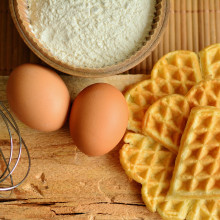
QotW - Are aliens edible?
Getting her teeth into an answer, Marika Ottman put this question to Dr Gareth Corbett, a gastroenterologist from Addenbrooke's Hospital in Cambridge...
Marika - Something about humanity is that when we come across something, we will usually try to eat it. Like pineapples, who first thought that was food? But could we eat alien life? On the forum, evan_au points out that there’s probably the same chance that aliens could eat us, as there is that we could eat them, but that doesn’t mean we could get nutrients from them. And Bored_chemist reminds us of an old, and very wise statement: "All mushrooms are edible...once.” But what if we found alien life on another planet? Would we even be able to make a dinner out of that? I put this question to Gareth Corbett, gastroenterologist at Addenbrooke’s Hospital in Cambridge to see if he had any food for thought...
Gareth - There are a number of theories regarding the basis of life on other planets. It is almost inconceivable that given the vastness of the universe that there is not extraterrestrial life. On Earth, carbon is the key constituent of all life, due to the perfect conditions that allow the formation of long carbon chain molecules which make up all life as we know it.
But there might be other ways to form life, with silicon and nitrogen being commonly cited as potential elements to base alien DNA around, due to their chemical bonding similarities to carbon. However, it would be “life, Jim, but not as we know it!” If we were able to take them from their environment to eat the chemical structure of silicon based organic molecules would not be digestible by our digestive tracts, and indeed regular dosing of silicon would likely be toxic to our bodies.
If we were to encounter carbon based life that was like plants and animals we would be likely to be able to physically consume them.
Marika - The problem is, our bodies have evolved over millions of years on this planet, to be able to digest the very complex proteins that exist here. Some molecules can have the exact same elements in them, but are actually mirror images of one another, just like your left and right hand. Lemons and oranges both get their taste from mirror images of the same compound, limonene. All of our proteins and sugars have this property of handedness, and our digestive system has evolved to expect them to be that way.
Gareth - our enzymes might not be the right shape to combine with alien molecules, like a right hand trying to go in a left-handed glove.
However, just to finish, while discussing this with my father in law, he simplified the issue for us, “just pop in a bit of garlic butter and it will taste fine!”










Comments
Add a comment